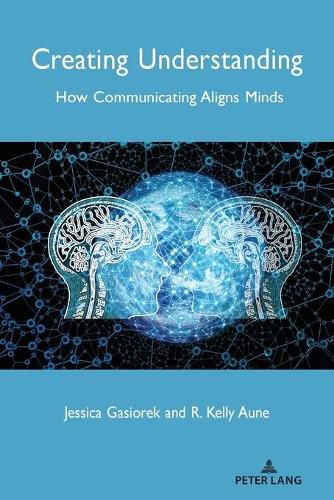Readings Newsletter
Become a Readings Member to make your shopping experience even easier.
Sign in or sign up for free!
You’re not far away from qualifying for FREE standard shipping within Australia
You’ve qualified for FREE standard shipping within Australia
The cart is loading…






This title is printed to order. This book may have been self-published. If so, we cannot guarantee the quality of the content. In the main most books will have gone through the editing process however some may not. We therefore suggest that you be aware of this before ordering this book. If in doubt check either the author or publisher’s details as we are unable to accept any returns unless they are faulty. Please contact us if you have any questions.
What, exactly, is understanding? And how do people create, maintain, and manipulate states of understanding via communication? This book addresses these questions, drawing on interdisciplinary scholarship in cognitive science, communication, psychology, and pragmatics. Rejecting classic descriptions of communication as sending and receiving messages, this book proposes a novel perspective that depicts communication as a process in which interactants construct, test, and refine mental modes of a joint experience on the basis of the meme states (mental representations) activated by stimuli in social interactions. It explains how this process, when successful, results in interactants’ mental models aligning, or becoming entrained-in other words, in creating a state of understanding. This framework is grounded in a set of foundational observations about evolved human cognition that highlight people’s intrinsic social orientation, predisposition toward efficiency, and use of predictive interference-making. These principles are also used to explain how codified systems ( codes ) emerge in extended or repeated interactions in which people endeavor to create understanding. Integrating and synthesizing research across disciplines, this book offers communication scholars and students a theoretical framework that will transform the way they see understanding, communication, and social connection.
$9.00 standard shipping within Australia
FREE standard shipping within Australia for orders over $100.00
Express & International shipping calculated at checkout
This title is printed to order. This book may have been self-published. If so, we cannot guarantee the quality of the content. In the main most books will have gone through the editing process however some may not. We therefore suggest that you be aware of this before ordering this book. If in doubt check either the author or publisher’s details as we are unable to accept any returns unless they are faulty. Please contact us if you have any questions.
What, exactly, is understanding? And how do people create, maintain, and manipulate states of understanding via communication? This book addresses these questions, drawing on interdisciplinary scholarship in cognitive science, communication, psychology, and pragmatics. Rejecting classic descriptions of communication as sending and receiving messages, this book proposes a novel perspective that depicts communication as a process in which interactants construct, test, and refine mental modes of a joint experience on the basis of the meme states (mental representations) activated by stimuli in social interactions. It explains how this process, when successful, results in interactants’ mental models aligning, or becoming entrained-in other words, in creating a state of understanding. This framework is grounded in a set of foundational observations about evolved human cognition that highlight people’s intrinsic social orientation, predisposition toward efficiency, and use of predictive interference-making. These principles are also used to explain how codified systems ( codes ) emerge in extended or repeated interactions in which people endeavor to create understanding. Integrating and synthesizing research across disciplines, this book offers communication scholars and students a theoretical framework that will transform the way they see understanding, communication, and social connection.